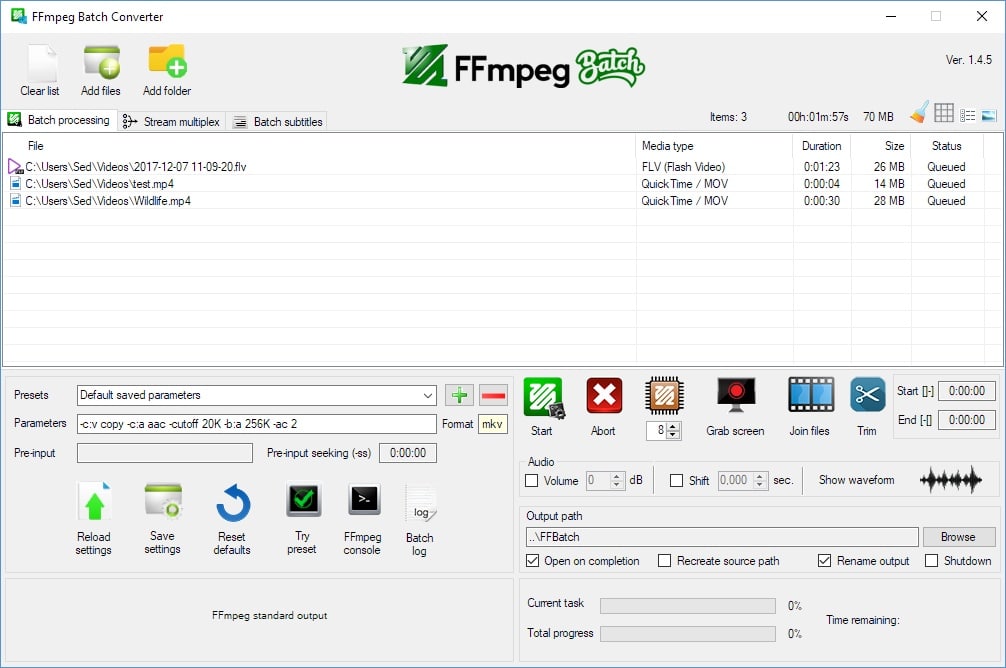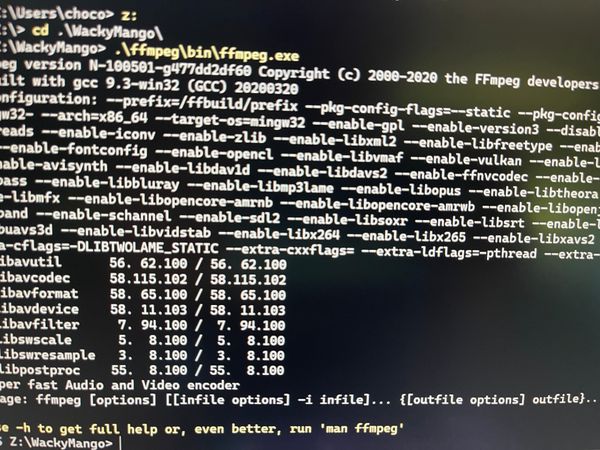

The -c copy part will make sure that ffmpeg does this without re-encoding the video. parts if you don't want to cut anything from the beginning, or from the end. t 10 will take 10 seconds after the starting point.

you can also specify -t instead of -to if you want to trim X seconds after the starting point, e.g.-to is the end of the trim in the HH:MM:SS.xxx or SS.xxx format,.-ss is the start of the trim in the HH:MM:SS.xxx or SS.xxx format,.To trim a video, call: ffmpeg -ss 00:01:00 -i input.mp4 -to 00:02:00 -c copy output.mp4 The time trimming will take only depends on your storage speed, copying the necessary parts into a new file. Trimming lets us slice out a desired timespan from a video, and with ffmpeg we can do this without re-encoding it - this means that this action is almost "instant", opposed to regular video editors. The last parameter is always the output name, conveniently no flag needed for that. The -i flag specifies an input, and they generally always come in the beginning. In the following examples I'll always use input.mp4 and output.mp4 as input and output respectively - just replace these with your actual filenames. These three might be the most often needed use cases I encounter. In this first installment of ffmpeg tutorials, let's take a look at trimming (something that makes a video smaller), cropping (something that makes a video smaller) and also, making videos smaller. Written by Tamás Deme on Fri Apr 29 2022.

In this case, the -c copy flag is used to define the output file in this case, the file considerations of high frequency econometrics and decision making Trim, crop and more - basic video editing with ffmpeg

Similarly to -ss, if you don’t want to cut part of the end of the video, but only part of the beginning, you don’t need to apply this flag. The option -t is used to specify the end of the new file in this case, the video will end at 00:02:00. The -i flag used to specify the file to be edited in this case, the file is LinuxHint-vim.mp4. For example, for 2 minutes and 3 seconds timing, you should type 00:02:03. As you can see, the timing format must be HH:MM:SS (Hours, Minutes, Seconds). If you only want to cut part of the end of the video, you don’t need to use this flag. The command below uses ffmpeg to cut the video from the second 00:00:05 specified with the flag -ss this is the flag to define a starting point for your new video in case you want to cut part of the beginning. I will be working with this Linux Hint video (duration 00:03:280) I just downloaded for this tutorial. You only need to define starting or end time, or both them if needed and the output file. Yum install ffmpeg ffmpeg-devel How to cut videos using ffmpeg:Ĭutting videos with ffmpeg is a pretty simple, fast, and low resource-consuming task using ffmpeg.


 0 kommentar(er)
0 kommentar(er)
